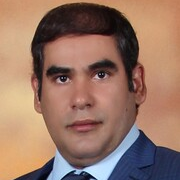Mineral Prospectivity Mapping (MPM) Using Multi-Source Datasets, Geo-Statistical Algorithms and Machine Learning Techniques
A special issue of Minerals (ISSN 2075-163X). This special issue belongs to the section "Mineral Exploration Methods and Applications".
Deadline for manuscript submissions: 30 June 2024 | Viewed by 4870
Special Issue Editors
2. Geoscience and Digital Earth Centre (INSTeG), Research Institute for Sustainable Environment, Universiti Teknologi Malaysia, Johor Bahru 81310, Malaysia
Interests: remote sensing; environment; satellite image processing; geological mapping; minerals; exploration geology; mining; exploration geophysics
Special Issues, Collections and Topics in MDPI journals
Interests: mineral prospectivity mapping (MPM); multi-dimensional data fusion; applied geophysics; applied geochemistry; mineral exploration; remote sensing
Interests: mineral prospectivity mapping (MPM); multi-dimensional data fusion; applied geophysics; applied geochemistry; mineral exploration; remote sensing
Special Issue Information
Dear Colleagues,
Mineral prospectivity mapping (MPM) is one the most important approaches to mineral exploration using a multi-source dataset. It normally uses a multivariable decision-making contrivance to define and highlight potential zones of ore mineralizations in metallogenic areas. MPM is a vital concern in mineral exploration and mining to diminish the exploration costs by offering an outline of drilling high potential zones of ore mineralizations. Remote sensing, geological, geophysical, and geochemical datasets can be combined to generate a mineral potential map of a study area at local to regional scales. Fusion, analysis, and the selection of information layers using geo-statistical algorithms and machine learning techniques provide a vital phase on the way to accomplishing accurate MPM for mineral exploration in metallogenic provinces. The main goal of this Special Issue is to focus on miscellaneous ideas about data fusion for MPM with a focus on elevating integration methods and intensifying methods for mineral exploration. Multidisciplinary innovative studies of mineral exploration established on a variety of datasets, algorithms, field, and laboratory techniques covering different research aspects to address ore mineral exploration are highly welcome and encouraged.
The topics of interest include but are not limited to
- Remote sensing analysis of multispectral and hyperspectral imagery for mineral exploration;
- Fusion of remote sensing, geophysical, geological, and geochemical datasets;
- GIS and remote sensing integration for mineral exploration modeling;
- Reflectance spectroscopy and geochemistry of rocks and minerals for mineral potential mapping;
- Interpretation and fusion of ASD spectroscopy and XRD, XRF, and ICP-MS analysis for mineral exploration;
- Recent advances in multi-source remote sensing information fusion for mineral exploration;
- Machine learning techniques for integrating remote sensing, geophysical, geological, and geochemical data;
- Multivariate, compositional, and geo-statistical techniques for mineral prospectivity mapping (MPM);
- Delineation of weak geochemical and geophysical anomalies pertaining to blind or covered deposits;
- Three-dimensional modeling of geochemical and geophysical anomalies.
Dr. Amin Beiranvand Pour
Prof. Dr. Ardeshir Hezarkhani
Dr. Aref Shirazi
Dr. Adel Shirazy
Guest Editors
Manuscript Submission Information
Manuscripts should be submitted online at www.mdpi.com by registering and logging in to this website. Once you are registered, click here to go to the submission form. Manuscripts can be submitted until the deadline. All submissions that pass pre-check are peer-reviewed. Accepted papers will be published continuously in the journal (as soon as accepted) and will be listed together on the special issue website. Research articles, review articles as well as short communications are invited. For planned papers, a title and short abstract (about 100 words) can be sent to the Editorial Office for announcement on this website.
Submitted manuscripts should not have been published previously, nor be under consideration for publication elsewhere (except conference proceedings papers). All manuscripts are thoroughly refereed through a single-blind peer-review process. A guide for authors and other relevant information for submission of manuscripts is available on the Instructions for Authors page. Minerals is an international peer-reviewed open access monthly journal published by MDPI.
Please visit the Instructions for Authors page before submitting a manuscript. The Article Processing Charge (APC) for publication in this open access journal is 2400 CHF (Swiss Francs). Submitted papers should be well formatted and use good English. Authors may use MDPI's English editing service prior to publication or during author revisions.
Keywords
- mineral propectivity mapping (MPM)
- ore mineral exploration
- remote sensing
- multi-dimensional data fusion
- machine learning techniques
- knowledge-driven models
- data-driven models
- geophysical exploration
- geochemical exploration
- geographic information system (GIS) modeling
- supervised and unsupervised algorithms
- geo-statistical algorithms
- deep learning techniques
- novel hybrid methods








